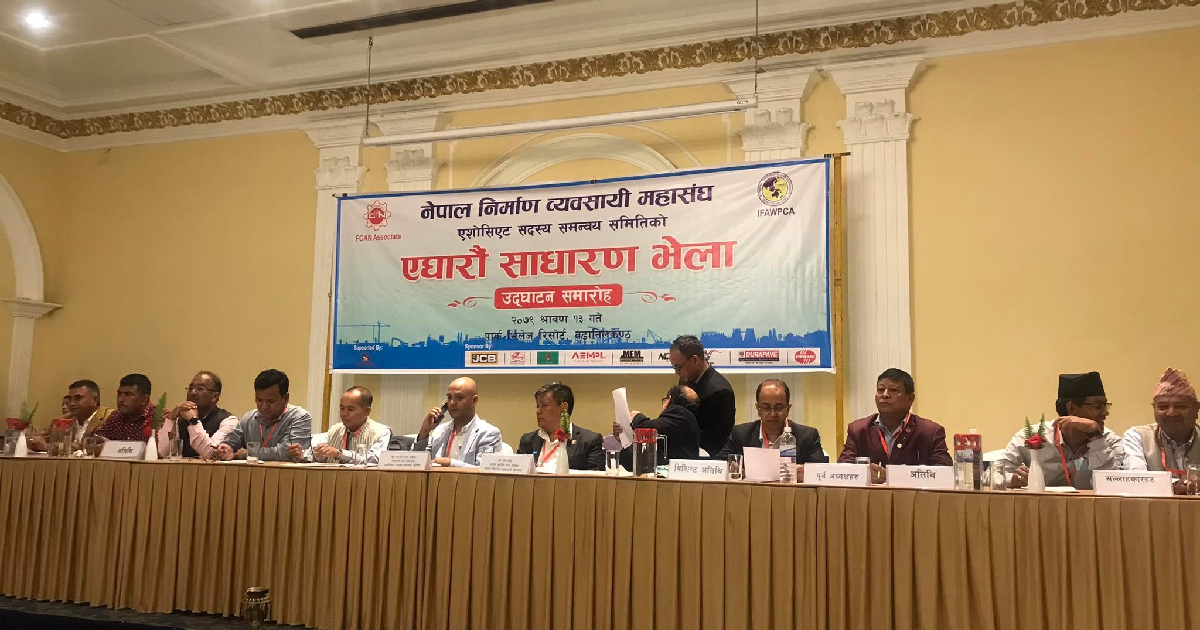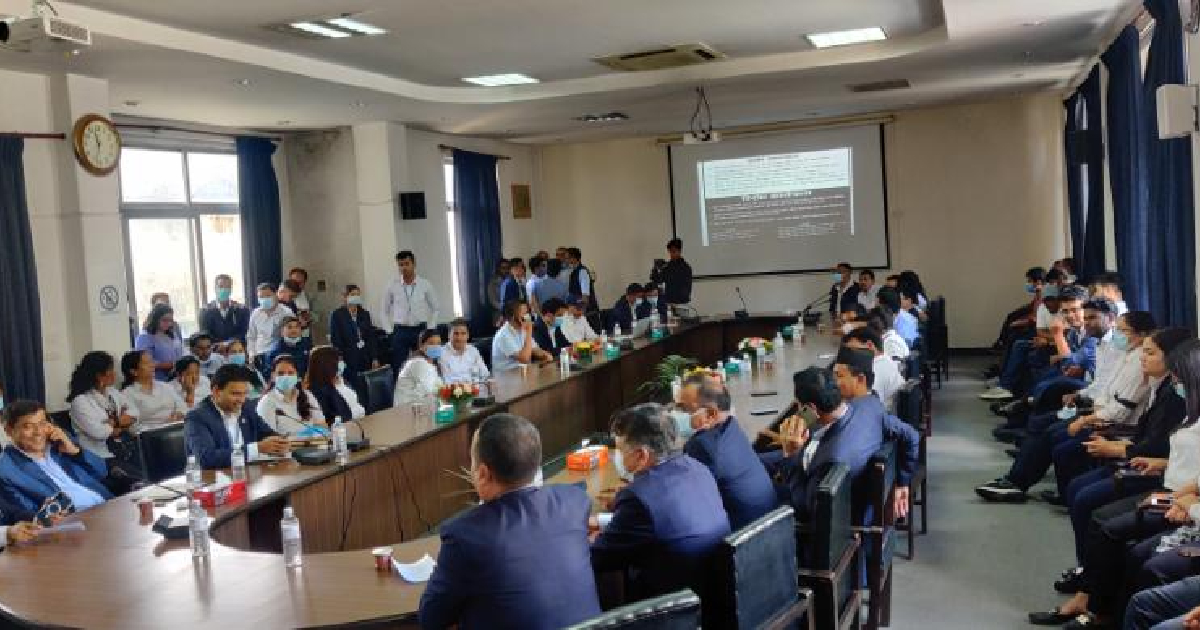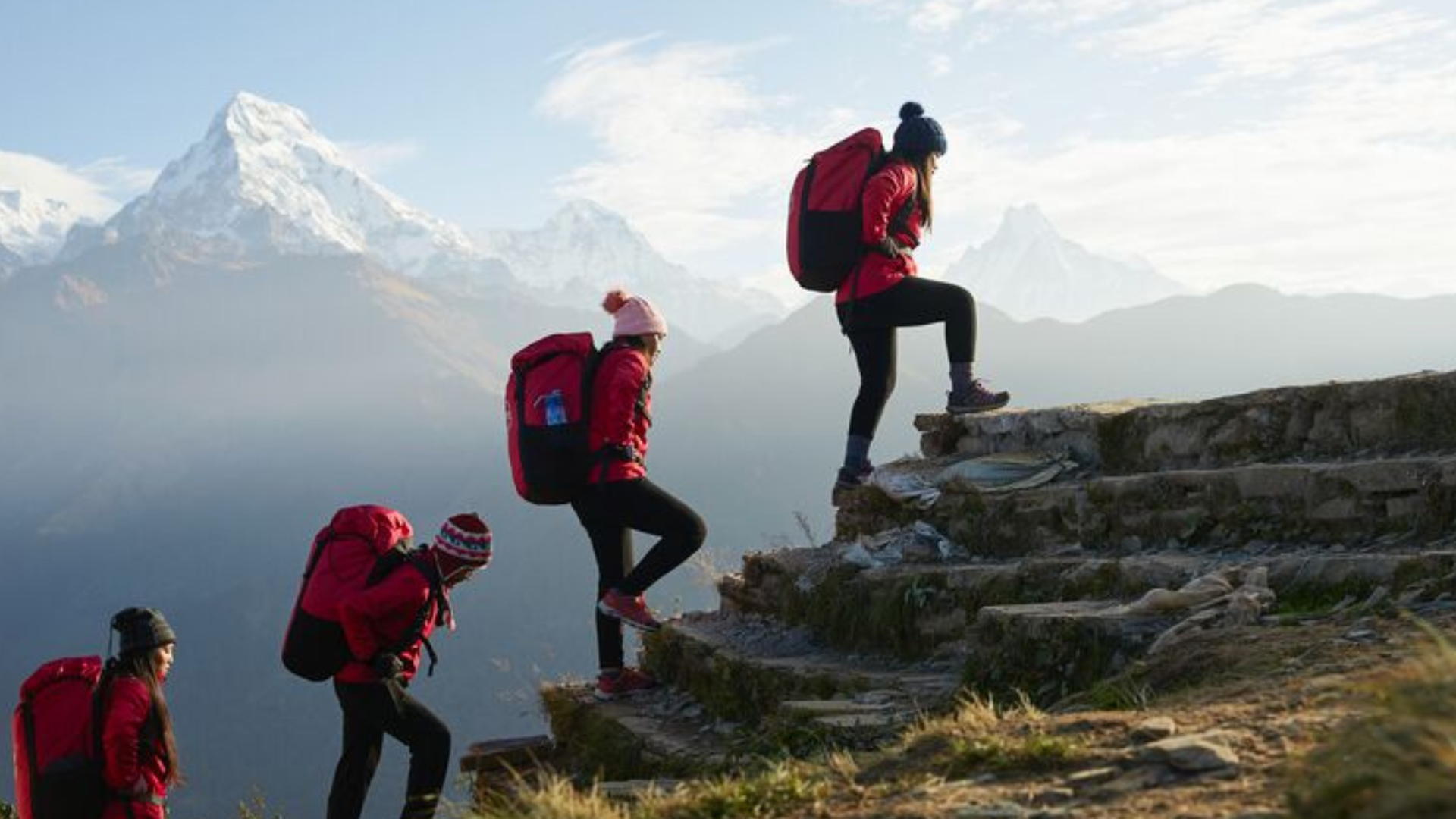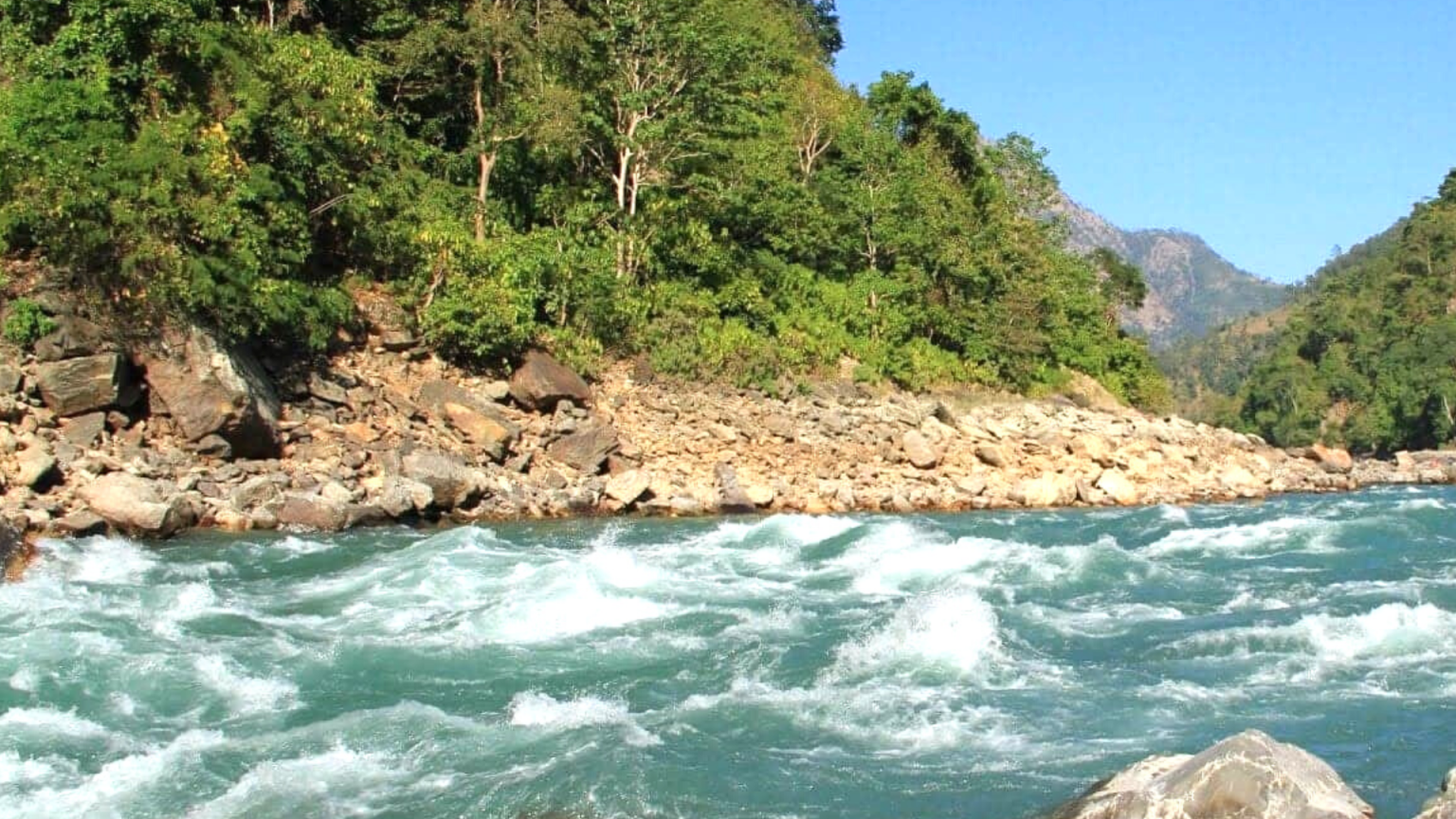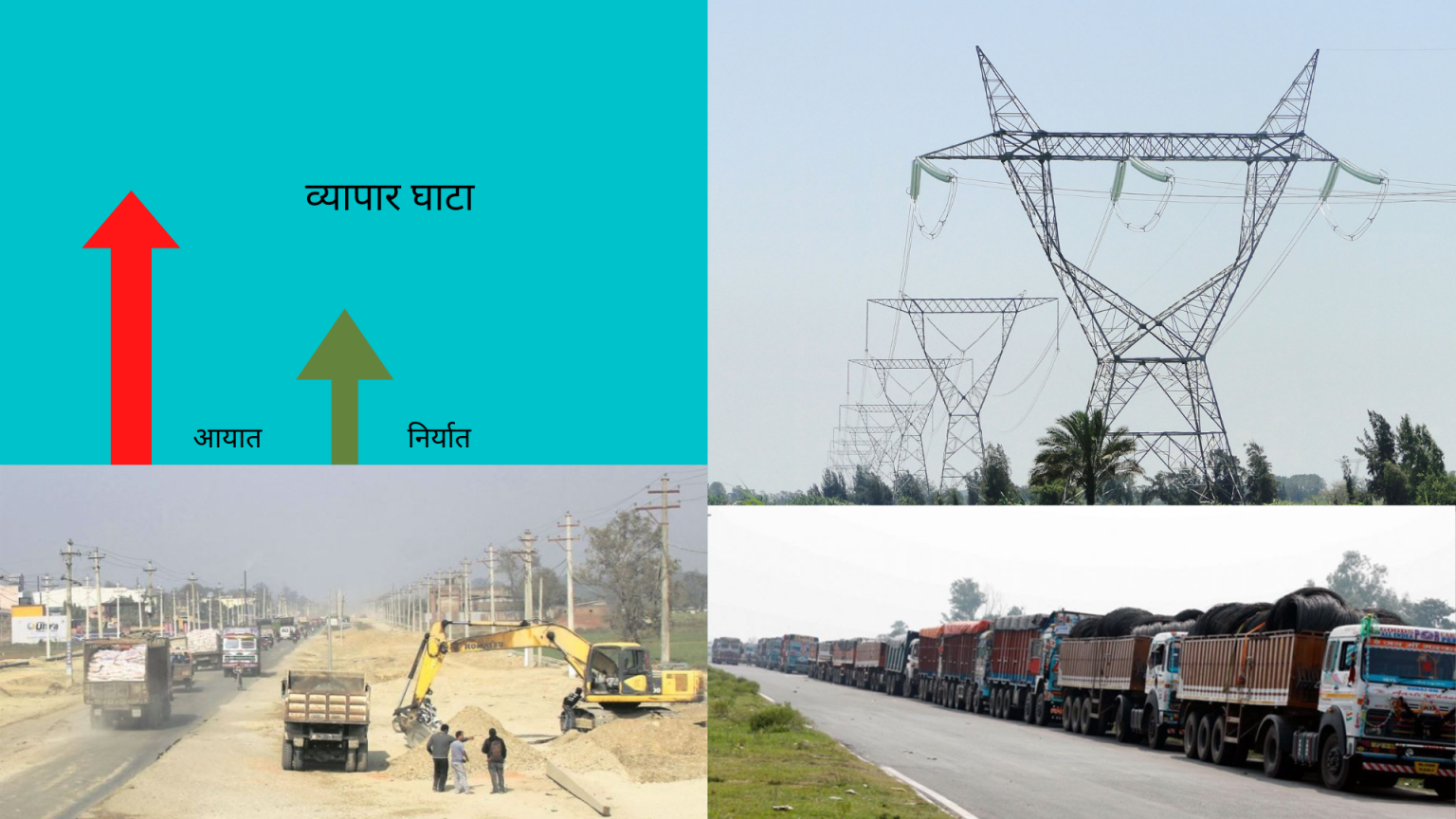



The current situation shows that the import volume is disappointingly high while exports are far lower. According to the Customs Department, Nepal’s trade deficit has reached Rs 1720.41 billion in the fiscal year 2021/22 with an export volume of Rs 200 billion and imports disproportionately higher of Rs 1920.44 billion. This data shows that although there are infrastructures for our trade with India and China, Nepal failed to utilize them to boost exports. We can easily trade up to 1000 MW between Nepal and India through the 400 Kv Dhalkebar-Muzaffarpur cross-border TL constructed for facilitating higher volume electricity trade.


However, hardly 364 MW of electricity is being exported to the southern neighbor from this structure. According to the Nepal Electricity Authority (NEA), a total of 39MW was exported to India last year. In the winter of 2021/22, Nepal imported up to 600 MW of electricity through other smaller TLs.Although the TL has been in operation for 6 years, it was charged only on November 11, 2020, with a 400 KVcapacity. Since last year only, the NEA pays Rs 1 billion rupees annually to the promoter company regardless of the amount of export or import volume of electricity. A study conducted in 2016 shows that 24,500 MW of electricity could be exported by 2035 through 11 cross-border TLs. However, so far only one cross-border TL has been operating. Butwal -Gorakhpur 400 KV cross-border TL is under construction.


“These trade infrastructures are being used for only imports. The government is lacking concrete policy to increase domestic production and promote export”
Although the increase in electricity export from the first cross-border TL is positive, it seems that the use of 6 main international roads and integrated check posts and dry ports are being used for only increasing imports.
Dr. Poshraj Pandey agrees with the fact that despite having international infrastructure, Nepal has failed to utilize it.
Despite the infrastructure, Nepal’s logistics cost is 30 percent while India’s is 15 percent. On the one hand, the existing infrastructures have not been utilized, on the other hand, these infrastructures are not suitable for reducing business costs.


“Nepal’s logistics cost is double that of India. As electricity production is increasing, there is potential for business. However, due to the fact that the government has not opened up private electricity businesses”
In recent times, due to the increase in electricity production, the possibility of business has increased. However, we are lacking enough infrastructure for this. There is only one electricity trading entity-Nepal Electricity Authority (NEA). Ashish Garg, Chairman of the Infrastructure Committee of the Confederation of Nepal Industries, admits that when Nepal imports goods and materials through the two ports in the east, it has to take a long route, which has increased the cost of transportation.
Most of the existing international infrastructures are focused on other commodities than the electricity trade. The Janakpur-Jayanagar rail section, which was built 85 years ago and closed 9 years ago, has just started operations. The 95-year-old Raxaul-Amlekhganj section train has been closed since 2022 BS after running for 38 years. Even now, the construction of the Raxaul-Kathmandu and Kerung-Kathmandu railways is being discussed. The government is conducting studies on them. The construction of the second Butwal-Gorakhpur, however, has not started.
Some are limited to transmission line plans only. According to Garg, if the 400 KV TL that is being built by the Arun-3 project is allowed to reach Sitamani in India through Dhalkebar, it will give some relief to the electricity business. However, Arun Dhiman, the Chief Executive Officer of SJVN Arun-3 Power Company Limited, which is constructing the 900 Mw Arun-3 project, says that there has been no discussion yet about evacuating electricity to other projects through the Arun-3 TL.
Policy along with inland infrastructure
Purushottam Ojha, former secretary of the Ministry of Industry, Commerce, and Supply (MIOCS), also sees the need to build international infrastructure to reduce Nepal’s growing imbalanced trade deficit.
The Intermodal Transport Development Committee prepared the Chobhar dry port in June 2018 to manage international imports and export by spending Rs 1.5 billion. This dry port was inaugurated on the 22nd of March.


“The graph of Nepal’s trade deficit is increasing year by year. It is not enough to just build empty inland infrastructure. Along with that, only if we improve everything including policies, laws, and operating systems, we can get the benefits we want”
There are about half a dozen dry ports in operation in Nepal so far. Birgunj has a dry port and integrated check post. Similarly, there are dry ports in Bhairahawa, Kakdbhita, Biratnagar, Tatopani, and Chobhar in Kathmandu. So far there are four integrated checkpoints.
Ashish Gajurel, Executive Director of the Intermodal Transport Development Committee, says that most of the goods are imported and exported through international dry ports and claims that the use of such structures is gradually increasing.


“Due to dry port and integrated check post, the cost of goods and goods is decreasing on the one hand and on the other hand, traders are getting free from hassles”
Gajurel also said international dry ports and integrated checkpoints are playing a convenient role for export and import in both countries.
Problems in the construction of cross-border TL
The construction of the cross-border infrastructure in Nepal does not seem to be based on the will of one country. There is an obligation to build it through bilateral and multilateral agreements. For the construction of such infrastructures, the necessary legal and diplomatic issues between the two countries have been addressed, but the internal problems within the country are also hampering the work. It takes at least 5-10 years to complete the entire cycle of TL construction. Project selection, budget management, feasibility and detailed studies, environmental impact assessment, compensation determination and distribution, inter-governmental agency coordination, tender documents and invitations, contract agreements, construction, etc., take a lot of time to complete. From Nepal’s perspective, the most complicated issue of TL construction is local obstruction, compensation for tower foundations to be built in community forests and government forest areas, and compensation for right of way (RoW).
As the government provides 100 percent compensation for the tower pad and only 20 percent compensation for the RoW, there are many disputes. The 57th report of the Office of the Auditor General states “in the absence of a clear policy on compensation and compensation for tower pad and RoW, determination of compensation is a very contentious issue.” In addition to making clear policy decisions, the Ministry of Energy and the Nepal Electricity Authority have established effective coordination and relationship with relevant government agencies and local levels for land acquisition.


“The first requirement is to consume the electricity produced in Nepal as much as possible within the country by building a strong network of TLs. It is also necessary to promote export the increased electricity in case of surplus” Krishna Prasad Acharya, Chairman of the Independent Power Producers Association (IPPAN)
There is no option of adding cross-border TLs for electricity trade. Krishna Prasad Acharya, Chairman of the Independent Power Producers Association (IPPAN)- a representative body of domestic power producers, says that the need for cross-border TL has increased with the rise in annual electricity generation from hydropower projects in the country. “The first requirement is to consume the electricity produced in Nepal as much as possible within the country by building a strong network of TLs. It is also necessary to promote export of the increased electricity in case of surplus,” he said.
Benefits that Nepal can get from inland ports
Experts say that the operation of the port will help in reducing the trade deficit by organizing the import and export of goods and services. Integrated checkpoints and dry ports have been constructed at the border with the basic objective of reducing both time and cost and facilitating trade. Compared to the past, many facilities have been added along with these infrastructures. The infrastructure built in the border area has helped trade, investment, tourism, and transportation to a great extent. It was established with the purpose of the government. “It is in the direction of achieving the corresponding achievement,” says former secretary Ojha. “We also have some shortcomings. If they are overcome, our trade will be easier in the coming days.”


“Growing trade deficit is not the result of lack of cross-border trade infrastructure but because of our weak supply capacity. We have to push up our exports with strong coordination among relevant agencies” Narayan Prasad Regmi, Spokesperson of the Ministry of Industry, Commerce, and Supply
The spokesperson of the Ministry of Industry, Commerce, and Supply, Narayan Prasad Regmi, said that the government is advancing infrastructure development and bilateral and trilateral talks for trade facilitation, there is no alternative to increasing production to reduce the trade deficit. “
The growing trade deficit every year has highlighted the need for the development and effective operation of international trade infrastructure even more pressing. If this is not taken as an opportunity, there is no other option than to watch the annual trade deficit touch record high every passing year.






